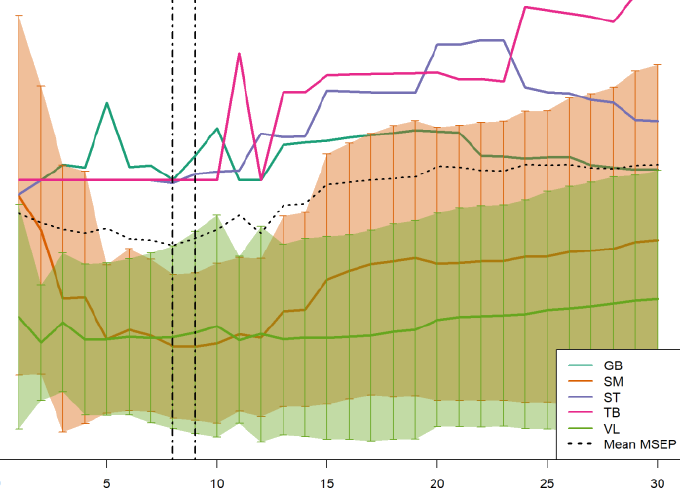For several years, studies conducted for discovering tenderness biomarkers have proposed a list of 20 candidates. The aim of the present work was to develop an innovative methodology to select the most predictive among this list. The relative abundance of the proteins was evaluated on five muscles of 10 Holstein cows: gluteobiceps, semimembranosus, semitendinosu s, T riceps brachii and V astus lateralis. To select the most predictive biomarkers, a multi-block model was used: The Data-Driven Sparse Partial Least Square. S emimembranosus and vastus lateralis muscles tenderness could be well predicted (R²= 0.95 and 0.94 respectively) with a total of 7 out of the 5 times 20 biomarkers analyzed. An original result is that the predictive proteins were the same for these two muscles: µ-calpain, m-calpain, h2afx and Hsp40 measured in m. gluteobiceps and µ-calpain, m-calpain and Hsp70-8 measured in m. Triceps brachii. Thus, this method is well adapted to this set of data, making it possible to propose robust candidate biomarkers of tenderness that need to be validated on a larger population.
I work on this project with Jérôme Saracco and Marie-Pierre Ellies.

